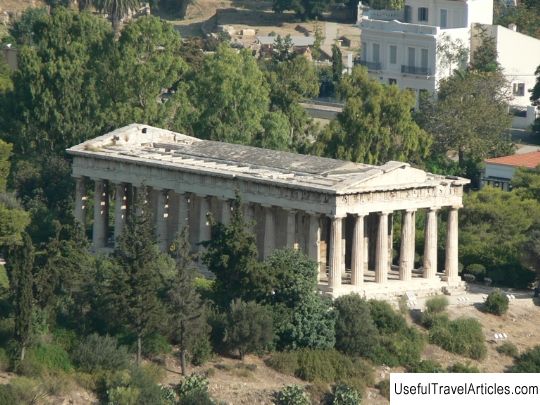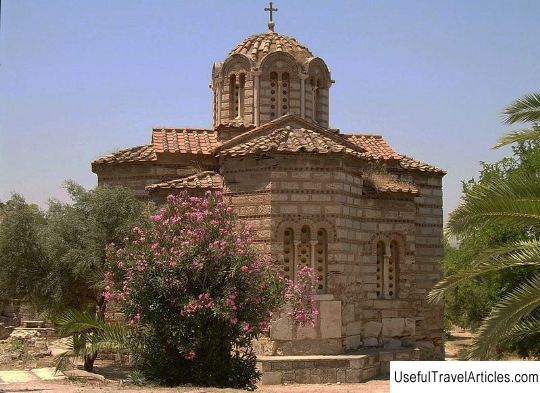Temple of Hephaestus description and photos - Greece: Athens
Rating: 8,4/10 (689 votes) 
Temple of Hephaestus description and photos - Greece: Athens. Detailed information about the attraction. Description, photographs and a map showing the nearest significant objects. The name in English is Temple of Hephaestus. Photo and DescriptionThe Temple of Hephaestus, also known as Hephaestion or even earlier as Theseion, is one of the best preserved temples from the era of Classical Greece. This colonnaded Doric temple is located on the northwestern side of the Athenian agora. The temple was built in 449-415 BC. in honor of the god Hephaestus (in Greek mythology, the god of fire, the patron saint of blacksmithing and the most skilled blacksmith). The construction was initiated by the Athenian statesman, orator and commander Pericles. During his reign, Athens reached the highest degree of economic and cultural development, this period is also called the "Pericles age". The construction of the temple took more than 30 years, as some of the workers were transferred to the construction of the Parthenon (447 BC). The architect of this masterpiece remained unknown. The Temple of Hephaestus was built of Pentelikon and Parian marble. The structure is 31.776 m long and 13.708 m wide and rests on 34 Doric columns, although the friezes are in Ionic style. 18 of the 68 metopes of the temple were sculptural, the rest were most likely painted. On the eastern side of the temple, 10 metopes had sculptural images of the exploits of Hercules. Another 4 metopes on the adjacent side pediments were decorated with scenes from the life of Theseus. According to the testimony of the ancient Greek geographer and writer Pausanias, the temple housed bronze statues of Athena and Hephaestus. Presumably the author of these statues was the ancient Greek sculptor Alkamen, however, there is no convincing evidence of this. In the 3rd century BC. trees and shrubs (laurel, myrtle, pomegranate) were planted around the temple, thus forming a small garden. From the 7th century until 1834, the Greek Orthodox Church of St. George was located in the temple. The Temple of Hephaestus is an archaeological site and is under the protection of the Greek Ministry of Culture.     We also recommend reading Waterpark Jungle description and photo - Ukraine: Kharkov Topic: Temple of Hephaestus description and photos - Greece: Athens. |




